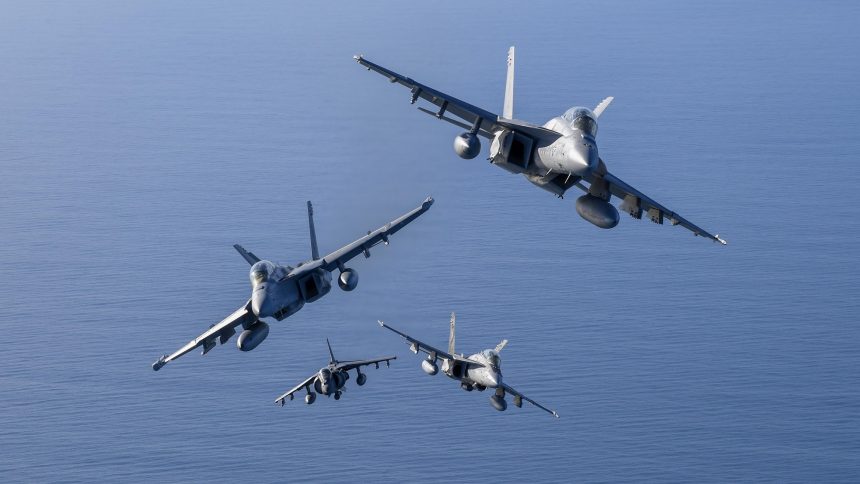The 12 million flight hours milestone cements the F/A-18 and EA-18G fleet’s status as one of the most enduring families of aircraft in modern naval aviation.
The U.S. Navy has announced on Aug. 1, 2025, that the F/A-18 and EA-18G aircraft fleet has surpassed 12 million flight hours since the introduction in the 1980s. This important achievement now cements even more the fleet’s status as one of the most enduring families of aircraft in modern naval aviation, which have served as the backbone of the U.S. Navy and Marine Corps aerial branches for decades.
The Navy today has around 550 F/A-18E/F Super Hornets and 150 EA-18G Growlers in service, together with 180 F/A-18A/C/D “Legacy” Hornets used by the U.S. Marine Corps. The last flight of the Legacy Hornet by the Navy was conducted in 2019, and the service is now currently receiving the newer Super Hornet Block III.
“When you call the roar of these aircraft ‘the sound of freedom,’ it holds real weight,” said Capt. Michael Burks, program manager for the F/A-18 and EA-18G program office (PMA-265). “Throughout their service, the F/A-18 and EA-18G family has supported nearly every major U.S. military conflict of the past 40 years and continues to adapt to rapidly changing threat environments. From the initial deployment of the Hornet to the advanced capabilities of the Super Hornet and Growler, these aircraft have delivered forward presence, tactical airpower and critical electronic warfare capabilities around the globe.”
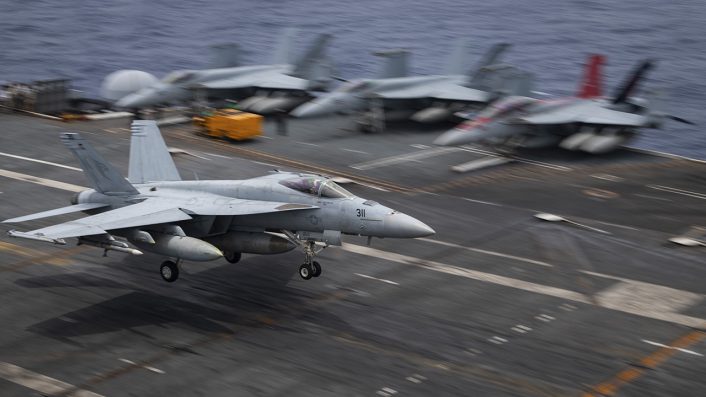
To give a better idea of this impressive milestone, the service noted that 12 million flight hours are the equivalent of a whopping 500,000 days, or nearly 1,370 years, of nonstop flight. The milestone is the result of the capability, reliability and availability of these aircraft, says the Navy, which in turn is the result of the work of thousands of people who work every day to sustain, fly and keep improving the jet.
“This milestone is a significant achievement and a reflection of the generations of Sailors, Marines and civilians who sustain, fly and innovate these platforms every day,” said Burks. “Twelve million flight hours demonstrates our commitment to delivering world-class capability, enabling our warfighters to execute their missions with an asymmetric advantage and return home safely.”
The service also highlights that the 12 million flight hours milestone comes at a notable time, as this year the Navy celebrates the 30th anniversary of the Super Hornet’s first flight, which happened on Nov. 29, 1995. Also, both the U.S. Navy and Marine Corps prepare to celebrate 250 years of service to the nation this year, as they were established on Oct. 13, 1775, and Nov. 10, 1775, respectively.
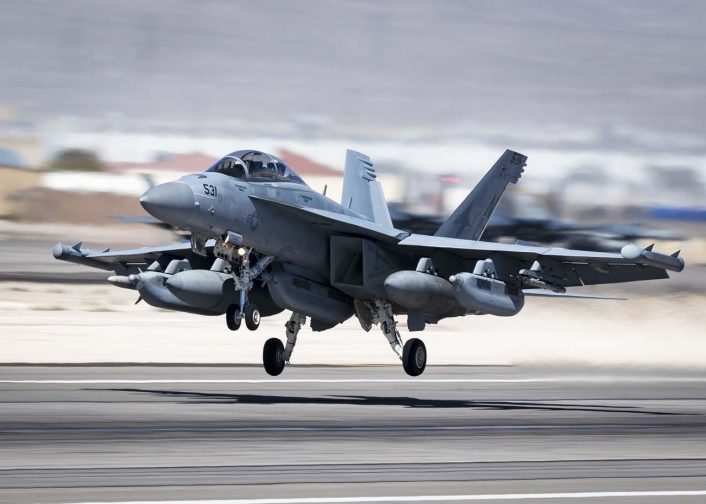
The F/A-18 family
The F/A-18 Hornet and Super Hornet family has long formed the backbone of U.S. Navy carrier-based strike and fighter aviation. Originally introduced in the 1980s with the F/A-18A/B, the platform evolved into the more capable F/A-18C/D, and later into the extensively redesigned F/A-18E/F Super Hornet, which today remains the Navy’s primary multirole fighter, complemented by the F-35C Lightning II.
The F/A-18A Hornet completed its first flight in 1978 and entered operational service with the Marine Corps in 1983, followed by the U.S. Navy in 1984, and replaced the F-4 Phantom II and the A-7 Corsair II. The F/A-18C flew for the first time a decade later, in 1987, with the deliveries starting shortly thereafter.
The F/A-18E/F Super Hornet, distinguished by its larger size, greater range, improved survivability, and increased payload, flew for the first time another decade later, in 1995, and entered service in 1999. The latest member of the Hornet family is the specialized EA-18G Growler, which flew for the first time in 2006 and was introduced in service in 2009.
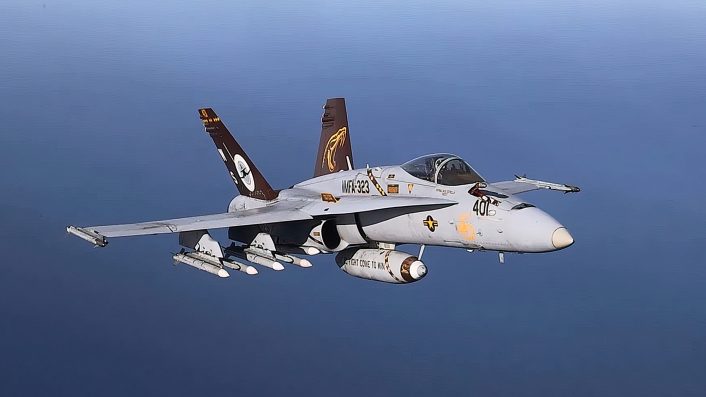
The Navy retired the Legacy Hornet in 2019, retaining only the newer Super Hornets and Growlers. The service received in 2020 the last of 322 single-seat F/A-18E and 286 two-seat F/A-18F jets in the Block II configuration delivered since 2005, which will now be followed by 95 new aircraft in the Block III configuration.
The Block III upgrade, featuring a renewed cockpit, new computing architecture and network infrastructure, as well as the possibility to add conformal fuel tanks, has been developed to extend the fleet’s service life and relevance. The Navy is currently receiving new-build Block III jets while also upgrading select Block II aircraft.
The Block III upgrades will be applied as part of the Service Life Modernization program, which will add 4,000 flight hours to the service life of the already delivered Super Hornets. The first phase of the SLM program has already been in motion for some years, extending the service life of the Super Hornet from 6,000 to 7,500 flight hours, while the second phase, started in 2023, is looking to extend the service life to 10,000 flight hours and perform the modifications required for the Block III upgrades.
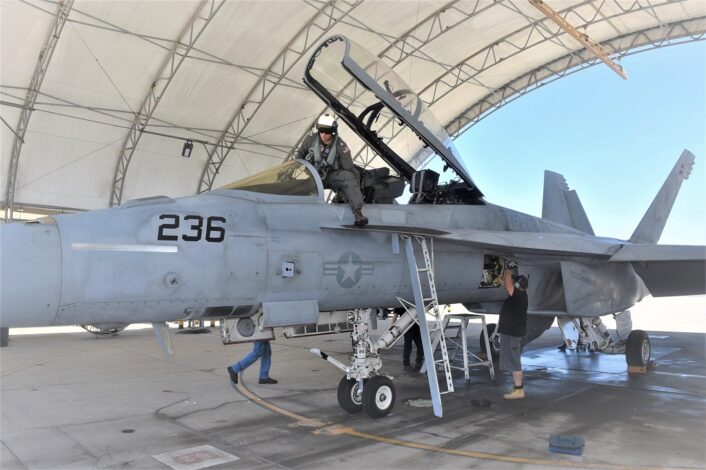
Parallel to the strike fighter force, the EA-18G Growler serves as the Navy’s primary airborne electronic attack platform. Based on the two-seat F/A-18F airframe, the Growler replaces the aging EA-6B Prowler. It carries a suite of advanced jamming systems such as the ALQ-99 and the Next Generation Jammer, electronic surveillance sensors, and AGM-88 HARM missiles to suppress enemy air defenses and disrupt communications.
The Growler fleet comprises about 150 and remains a unique asset among NATO forces, with Australia being the only foreign operator. The U.S. Navy is planning mid-life upgrades also for the EA-18G under the Block II Growler program, which will enhance survivability, electronic warfare capabilities, and situational awareness.

